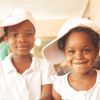By Dr. Sumit Gupta and Dr. Shaun Morris
The significant progress that has been made in treating pediatric cancer is rightly celebrated: over 80% of children with cancer in high-income countries (HICs) are now cured.1,2 Unfortunately, these advances have not been fully realized in low- and middle-income countries (LMICs), where the majority of children with cancer live.3,4 A major challenge to improving LMIC pediatric cancer outcomes is the limited data on the true burden of childhood cancer in these settings.5 This "data deficit" hampers efforts to place childhood cancer on public health agendas, and hinders the design and implementation of effective national childhood cancer strategies.5
In order to better understand this gap, researchers from The Hospital for Sick Children, University of Toronto and the Centre for Global Health Research, Li Ka Shing Knowledge Institute, at St. Michael's Hospital in Toronto, Canada, along with colleagues at the Tata Memorial Centre, in Mumbai, India collaborated to examine existing data on cancer deaths in childhood (one month to 14 years) in India. The analysis published last week in the Journal of Global Oncology, utilized data from the Million Death Study (MDS), a unique, nationally representative, and longitudinal survey of over 14 million people including a cohort of more than 27,000 pediatric deaths in India.
We uncovered that the burden of childhood cancer in India is substantially higher than previously suggested. Using verbal autopsies from the MDS, and a rigorous process of re-assessment of the causes of death, we found higher mortality rates than reported in the past, and that in some cases exceeded even estimates of incidence provided by population-based cancer registries. Relying solely on estimates from cancer registries is therefore likely to significantly underestimate the true burden of LMIC childhood cancer.
High quality cancer registries are rare in LMIC settings. Even where they exist, multiple steps are required to capture pediatric cancer diagnoses.6 Caregivers must seek medical attention, and health care workers must refer patients to medical centers capable of diagnosing malignancies. Only upon a correct cancer diagnosis can a tertiary center register the case. Vital statistics are dependent on similar steps. Breaks in this chain of events may occur at any step, leading to underestimates of the true incidence or mortality.6 Such underestimates are likely to be substantial in settings with barriers to accessing high-quality healthcare. These issues have been noted not only in India, but across various LMICs.7,8
By using the Million Death Study (MDS), our analyses provided national estimates of the burden of childhood cancer mortality in India that are substantially higher than those previously documented. These new estimates can be used by childhood cancer advocates and policymakers to both encourage and design national childhood cancer strategies, and improve the outcomes of LMIC children.
This work was supported by grants from the John E Fogarty International Center of the National Institutes of Health; Bill & Melinda Gates Foundation; Canada Research chair program; and the University of Toronto.
- Gatta G, Botta L, Rossi S, et al: Childhood cancer survival in Europe 1999-2007: results of EUROCARE-5 - A population-based study. Lancet Oncol 15:35-47, 2014
- Smith MA, Seibel NL, Altekruse SF, et al: Outcomes for children and adolescents with cancer: Challenges for the twenty-first century. J Clin Oncol 28:2625-34, 2010
- Ribeiro RC, Steliarova-Foucher E, Magrath I, et al: Baseline status of paediatric oncology care in ten low-income or mid-income countries receiving My Child Matters support: a descriptive study. Lancet Oncol 9:721-9, 2008
- Sullivan R, Kowalczyk J, Agarwal B, et al: New policies to address the global burden of childhood cancers. Lancet Oncol 14:e125-35, 2013
- Gupta S, Rivera-Luna R, Ribeiro RC, et al: Pediatric oncology as the next global child health priority: The need for national childhood cancer strategies in low- and middle-income countries. PloS Med 11:e1001656, 2014
- Howard SC, Metzger ML, Wilimas JA, et al: Childhood cancer epidemiology in low-income countries. Cancer 112:461-72, 2008
- Al Sheyyab M, Bateiha A, Kayed SE, et al: The incidence of childhood cancer in Jordan: A population-based study. Ann Saudi Med 23:260-3, 2003
- Metzger ML, Howard SC, Fu LC, et al: Outcome of childhood acute lymphoblastic leukaemia in resource-poor countries. Lancet 362:706, 2003
About the Authors
Dr. Sumit Gupta is a Staff Oncologist and Clinician Investigator at The Hospital for Sick Children (SickKids), the largest paediatric academic health sciences centre in Canada. He is also the chair of the Data Registry working group of the SickKids-Caribbean Initiative and leader of Policy and Economics Research in Childhood Cancer (PERCC).
Dr. Shaun Morris is a Staff Infectious Disease Physician and Clinician-Scientist at The Hospital for Sick Children (SickKids) and the SickKids Centre for Global Child Health.
